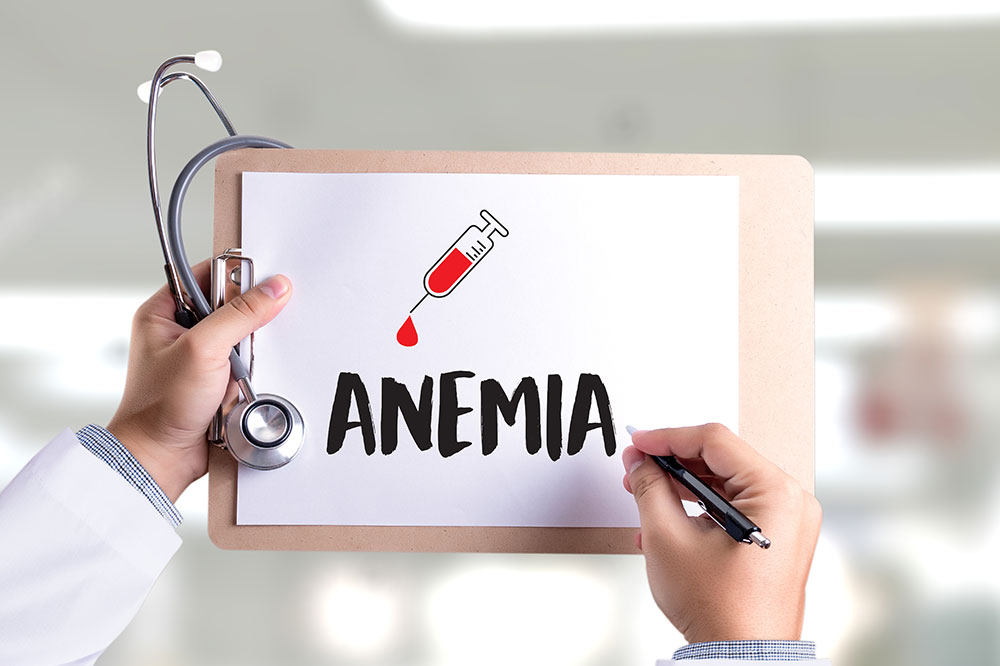Managing Multiple Myeloma – Best and Worst Foods

Multiple myeloma is a form of cancer that affects plasma cells in the bone marrow and is associated with severe health complications. Many symptoms of multiple myeloma can go unnoticed until the disease has progressed to other parts of the body. So, recognizing uncommon signs of the condition can help one get an early diagnosis. Further, treatment options and lifestyle changes, including choosing the right foods, can help manage the condition.
Best foods
Certain foods can help one manage multiple myeloma symptoms and maintain strength when undergoing treatment.
Fruits and herbs: Ursolic acid is a naturally occurring compound in foods like apples, basil, rosemary, and cranberries. It has anti-inflammatory and anti-cancer properties, which can help reduce the symptoms of this condition. Apples are especially rich in ursolic acid, making them a great choice for those with multiple myeloma. Further, pterostilbene, a compound found in blueberries, has been linked to potential anti-cancer benefits. Its antioxidant properties may help reduce inflammation and fight free radicals.
Cruciferous vegetables: Isothiocyanates are natural compounds found in cruciferous vegetables such as cabbage, broccoli, and cauliflower. The compounds are derived from sulfur-containing chemicals that may inhibit cancer cell growth. Studies suggest that isothiocyanates can reduce the risk of multiple myeloma and other types of cancer. Additionally, isothiocyanates have been found to reduce inflammation and oxidative stress in the body.
Iron-rich foods : Iron is essential for a healthy immune system and helps the body make red blood cells. One can find the nutrient in beans, chickpeas, lentils, and nuts. Additionally, one should ensure they get enough vitamins and minerals from sources other than food.
Turmeric: Curcumin is an active ingredient in turmeric, a spice widely used in several cuisines. It has powerful anti-inflammatory and antioxidant properties that can help relieve certain multiple myeloma symptoms.
Foods with folate: Folate or vitamin B9 is essential for cell growth and health. It is found in many fruits and vegetables, like black-eyed peas, broccoli, lentils, and green leafy vegetables. Folate helps keep homocysteine levels in check, which is an amino acid linked to an increased risk of multiple myeloma.
Sources of vitamin C, D, and B12: Vitamin C helps absorb iron from food, while vitamins D and B12 help the body make and utilize red blood cells. Vitamin C can be found in bell peppers, oranges, berries, and lemon juice. Oranges, yogurt, and milk are good sources of vitamin D, while dairy products, soy milk, almond milk, and flax milk contain B12. These foods can help those with multiple myeloma get the necessary nutrients to manage their symptoms.
Worst foods
Unpasteurized drinks: For those with multiple myeloma, unpasteurized drinks can increase the risk of foodborne illnesses. These drinks have not been heated to the point of eliminating potentially harmful microorganisms. Examples of such drinks include raw milk, apple cider, and other fruit and vegetable juices.
Raw meat or fish: People with the condition should avoid raw meats, as they can contain bacteria and viruses, such as Salmonella, that can cause food poisoning. Raw fish may also contain parasites that can lead to serious health issues. So, one should also avoid foods like sushi, which contains raw fish. Further, sushi is accompanied by sauces like high-sodium soy sauce, which can exacerbate high blood pressure and other issues associated with multiple myeloma. If one chooses to have raw meat or fish, the items should be stored at a safe temperature, cooked thoroughly, and consumed immediately. Additionally, surfaces that have come into contact with raw foods should be sanitized before use.
Raw sprouts: Raw sprouts have been linked to multiple foodborne illnesses, particularly in people with weakened immune systems. Due to their humid growing conditions, sprouts can quickly become contaminated with bacteria such as Salmonella, E. coli, and Listeria. These bacteria can cause serious illnesses, especially in people with weakened immune as observed with multiple myeloma.
Uncooked eggs: Raw or undercooked eggs contain bacteria like Salmonella, which can cause food poisoning. People with multiple myeloma should avoid undercooked and raw eggs.
When diagnosing the disease, doctors initially recommend tests such as nerve conduction studies, electromyography, or imaging studies to rule out other causes and initiate treatment. Some people undergoing treatment may experience little or no improvement and recurring signs of the disease. This is called relapsed refractory multiple myeloma, where cancer does not respond to the treatment or returns. Here, doctors may recommend other treatment options.
Unusual signs
Here are a few uncommon signs to recognize to get early treatment and manage the condition better.
Fatigue: Here, even after a good night’s rest, one may experience extreme tiredness and exhaustion when affected by multiple myeloma. Fatigue here affects energy levels even with minimal physical activity. It can cause other issues, such as difficulty concentrating and memory problems. One may feel so fatigued that it becomes difficult to carry out daily activities.
Frequent infections: This is brought on by a weakened immune system due to abnormal plasma cells. Here, one may experience frequent infections in the upper respiratory tract, urinary tract, or skin. These infections can become serious if left untreated, causing long-term health complications.
Bruising or bleeding: Here, one may notice bleeding in the gums, nosebleeds, or unusually heavy periods. They may also bruise easily. Unexplained bleeding may indicate that the body is experiencing trouble forming blood clots due to a drop in the levels of platelets or other blood-clotting proteins affected by cancer cells.
Bone pain and fractures: Bone pain and fractures can be a sign of multiple myeloma, as the condition can weaken bones and increase the risk of fractures. Bone pain with this condition is usually observed in the spine, ribs, or other bony areas. In more advanced cases, it may spread to other body parts. Fractures here may typically develop without any trauma or injury.
Numbness, tingling sensation, or weakness: These symptoms can result from myeloma cells damaging the nerves in the peripheral nervous system. One may experience a pins and needles sensation, numbness, weakness in the arms and legs, or even the face or torso.






